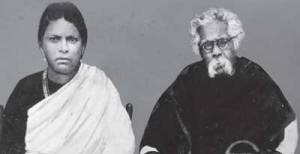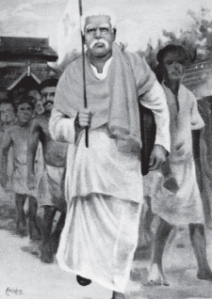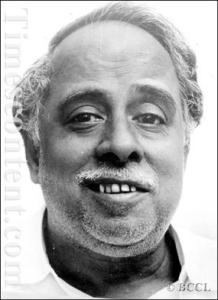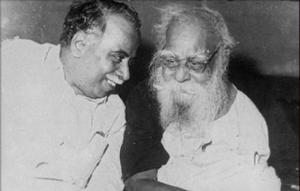The world https://www.cfr.org/global-conflict-tracker, major is defined as any conflict that has resulted in more than 10,000 deaths, some of it like the Tigray war is one of the bloodiest in decades, with an estimated half a million dead in just 18 months, a staggering casualty rate of 27,000 dead per month! The bloodiest war since WW2, the 2nd Congo war with its estimated 5 million dead is officially over but has been simmering now for a decade and is on the boil again. A whopping 5 million Congolese are displaced internally and another 1 million are fleeing outside the DRC, putting immense pressure on already resource starved neighboring countries. The UN in 2021 requested urgently funding to the tune of $ 2bn to render basic humanitarian aid to the most at risk groups in the DRC, children and women. Only 39% of the requested funds were raised by the UN, leaving to massive cuts across the board to basic aid, affecting disproportionately heavily Congolese children.
This year, an estimated 27 million people are acutely food insecure, which makes the DRC the country with the largest number of food insecure people in the world. Of the nearly 4.2 million people suffering from global acute malnutrition, 2.4 million are children under the age of five; 5.5 million people – the largest number on the African continent – are internally displaced, mainly due to armed conflict. People’s vulnerability is also aggravated by structural problems such as extreme poverty and the lack of basic infrastructure.
https://reliefweb.int/report/democratic-republic-congo/2022-humanitarian-response-plan-requires-us188-billion-support-most
In 2022, the UN has similarly raised a demand for $ 1.8 billion for urgent aid, but given the focus on Ukraine would this target even be achieved is an open question to which we don’t have answers but only last year as a guide and the answer based on that is a resounding no. Ukraine meanwhile has received more than $ 900 Mn in just private donations, the US alone is providing it $ 40 bn in aid, the EU adds another $ 9bn to the warchest. In totality just the US+EU+private donations is a commitment of close to $ 50 bn. The DRC meanwhile raises, globally a meagre sum of $700 mn. The discrepancy is vast and the same underlying hypocrisy that has driven global geopolitics for the past 3 centuries is at work here. One rule for Europe + the US and another entirely for the rest of the world, all of it neatly tied up in flowery speeches of democratic values, rules based order (RBO). The stark reality though is that the rest of the world has not the same level of priority for the collective “West” and the rules are always different.
This is starkly evident in how the Western allies left the ancien regime of the NSDAP (Nazi Party) pretty much intact, while managing some show trials to pretend to the world that “Justice was being done”. A few decades later, another tyrannical ancien regime was toppled, and yet in this case, the US policy was to uproot entirely root and stem up the governance and administration of a large, fractitious nation, under its misguided and simply poor policy of De-Ba’athification, resulting in severe blowback which include the rise of the ISIS, the Iraqi and later Syrian civil wars….consequences in which millions perished or were rendered refugees in their own nations.
While the general perception is that the Nuremberg trials was a cathartic seeking of justice for those who perpetrated genocide on a continental scale, and there was a West Germany wide DeNazification program, the reality is far from the truth. While the Denazification programs touched upon areas like propaganda and control of news, the US govt took over directly key newspapers, radio stations, theatre houses to channel the flow of information and ostensibly to prevent the spread of the NSDAP ideology, those who were ostensibly being purged quietly moved back into key positions of power in the political, military and bureaucratic pillars of post war German society.
While around the wars end, there was some policy decisions by the USA on harsh treatment of both the populace as well as any Nazi party officials and this culminated in Joint Chiefs Directive # 1067, this was very soon replaced by a revised, more ‘softer’ approach post the Postdam conference, after which the spigots of aid via the Marshall plan were turned open full flow.
The USA saw in the USSR an almost existential threat and hence for the greater good, believed that stripping West Germany of administrative continuity would be to its own disadvantage, co-opted many Nazi figures either knowingly or unknowingly. Former Nazi officials captured various positions of power, take the West German justice department. Between 1949 and 1973, 90 of the West German Justice Ministry’s 170 leading judges and lawyers were former members of the Nazi party,
Of those 90, 34 had been members of the Nazi party’s original paramilitary SA group, which helped Adolf Hitler rise to power and participated in the bloody Night of the Broken Glass (also known as Kristallnacht) that killed an estimated 91 Jewish Germans.
Some of the highest rungs of the West German political apparatus were also similarly ‘captured’. Kurt Georg Kiesinger, the 3rd chancellor of West Germany who was in power from 1966 to 1969 was an ardent Nazi, when this was raised he merely claimed that he opposed the Nazis and never liked their ideology. This was good enough an explanation and there were no obstacles to his taking one of the highest (3rd highest) offices in Germany. Walter Scheel (1974 to 79) held the highest post by German order of precedence. Again, like Georg Kiesinger, he was a Nazi , yet his crimes were whitewashed in their entirety and he was promoted as a venerable statesman. In this obituary, the Guardian simply time skips the period he was a Nazi and only mentions his Luftwaffe career. Keep in mind that German military officers were not forced to join the NSDAP and it was purely out of choice. Many, if not most serving officers and rank and file soldiers never made that choice, but Herr Scheel did.
The career of Karl Carstens is even more intriguing. He was a diehard Nazi who joined the Hitler Jugend (Hitler Youth) as a student then joined the notorious SA paramilitary (precursor to the SS and the unit responsible for the murder of Jews during the Kristalnacht), yet in 1948 he was cleared of all wrong doing and immediately cleared for a visa to the United States where he studied at Yale. He returns back to Germany for a career in the bureaucracy and rose to senior rank in the foreign service. When his former NSDAP colleague, Georg Kissinger rose to power as chancellor, he promoted Karl Carstens as head of the Chancellery (a very powerful administrative role).
How did Herr Scheel deal with his dirty past? He went through 3 different stages of Amnesia, first he claimed he was never a NSDAP member, then he said he did not remember whether he had applied for it or not but eventually in 1978 when he became President, admitted that he was indeed a NSDAP member. The venerable WaPo in its obituary mentions his career as an amateur singer, but not a mention of his sordid Nazi past. So much for speaking truth to power.
So many names of Nazi officials, many with blood on their hands rose to great positions of power and influence. Erhard Eppler, Richard Jaeger (minister of justice) had been a part of the SA right from inception. Hans-Deitrich Genscher (interior minister then foreign minister) and 100’s more, some of these were also laced with dark irony, for instance Theodor Oberlander, another NSDAP member, head of a Nazi party district AND assistant to Reichsverteidigungskommissar Erich Koch (who was the key administrator for parts of occupied Poland in which 10’s of thousands were murdered by the Germans) was made minister for refugees and displaced persons! talk about irony. Herr Oberlander was fully rehabilitated again by the Americans. Post the war he joined a division of the CIA no less and then a career in politics.
A lot of this was buried until recently. One of the first major efforts to identifying NSDAP members in positions of power and influence in the West (be it Germany or the USA) started in 2011 when the Govt published a report on this subject..
The people in question would have been born between 1879 and 1928. Whether it will ever be possible to separate the good from the bad seems questionable at the very least. About a million people from the generation in question worked for the government in the early years of the republic. But according to the report, only about 200,000 personnel files from this period still exist.
https://www.spiegel.de/international/germany/from-dictatorship-to-democracy-the-role-ex-nazis-played-in-early-west-germany-a-810207.html
No one exemplifies rehabilitation more than Hans Globke. He was a key signatory of the Nuremberg race laws, and as one of the highest administrative officers in the Nazi German regime he framed and passed explicit anti semitic laws, passed orders for eliminating coloured races from the gene pool and was deserving of hearing at Nuremberg. Yet the British rehabilitate him, he issued a statement that he “hated Hitler” that he was in reality a member of the resistance and that was that. He rose to become the head of the Chancellory office, was given the highest civilian honours by Portugal, Italy and German. He also in his period at the interior ministry employed Nazis in 12/15 key senior roles.
Not just the Justice ministry or political high office, fully half of the post war interior ministry? ex Nazis. Quite possibly 10’s of thousands of Nazis worked in the West German state for decades after the alleged fall of Nazism, many senior figures moved to the US where possibly 1000’s of Nazis lived and worked as civilians. When the US INS initiated investigations, the CIA scrubbed the files of many of these Nazis.
So where was the ‘justice’? the cathartic relief for the persecuted peoples? It was sacrificed on the altar of Realpolitik. The US launched Operation Paperclip, rescued and rehabilitated some really diehard Nazis because their work on missiles and rocketery was more important than them facing real justice for their crimes.
To be continued in part 2.





